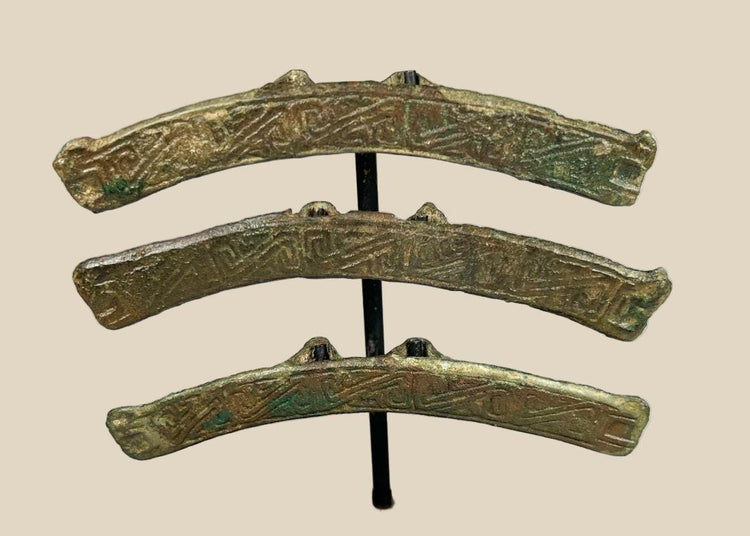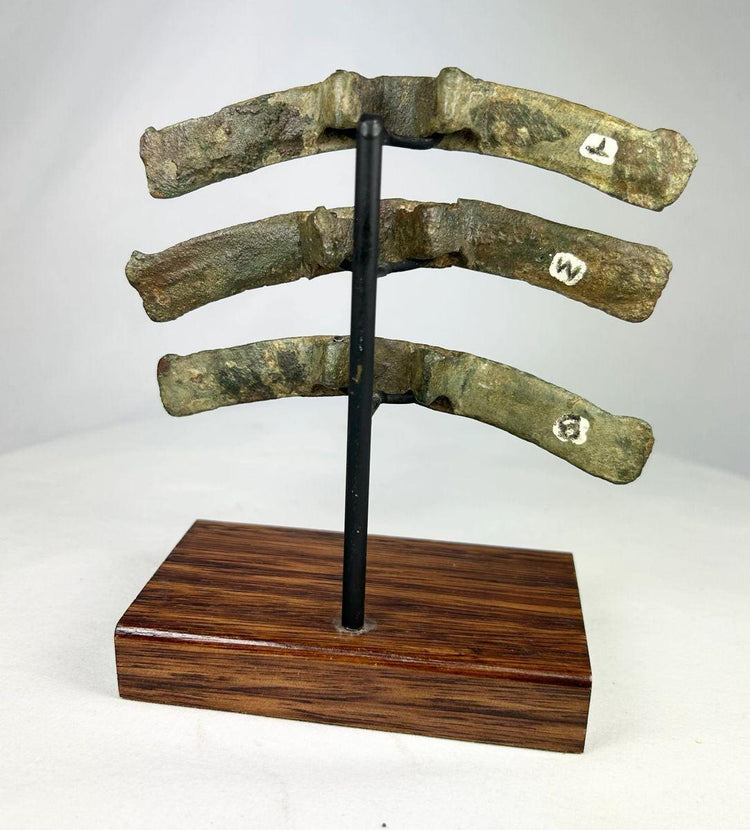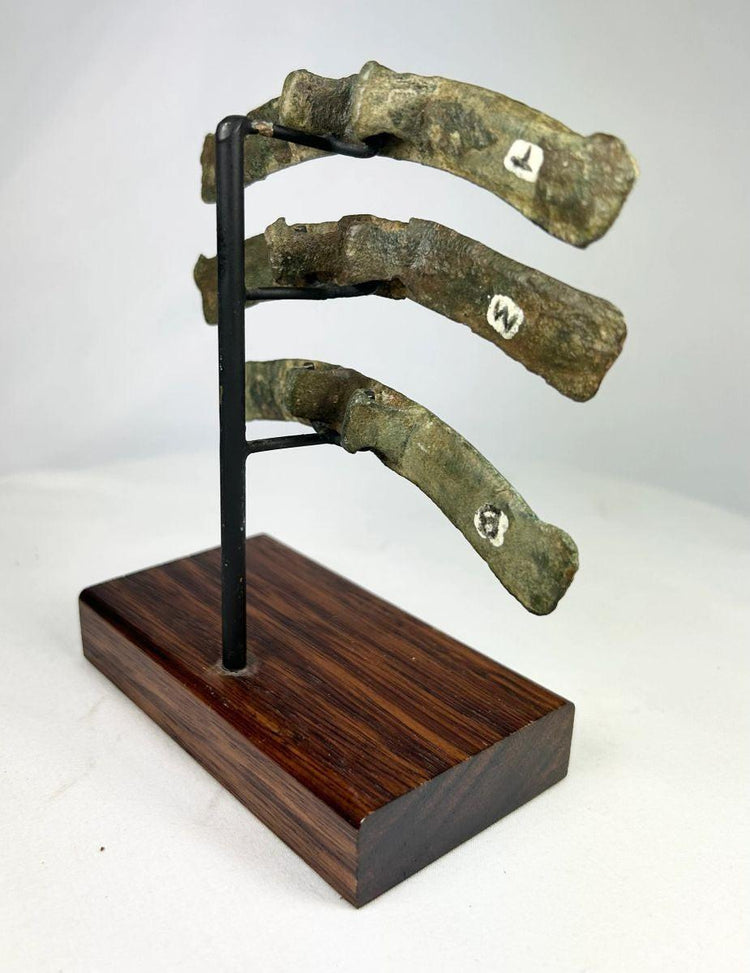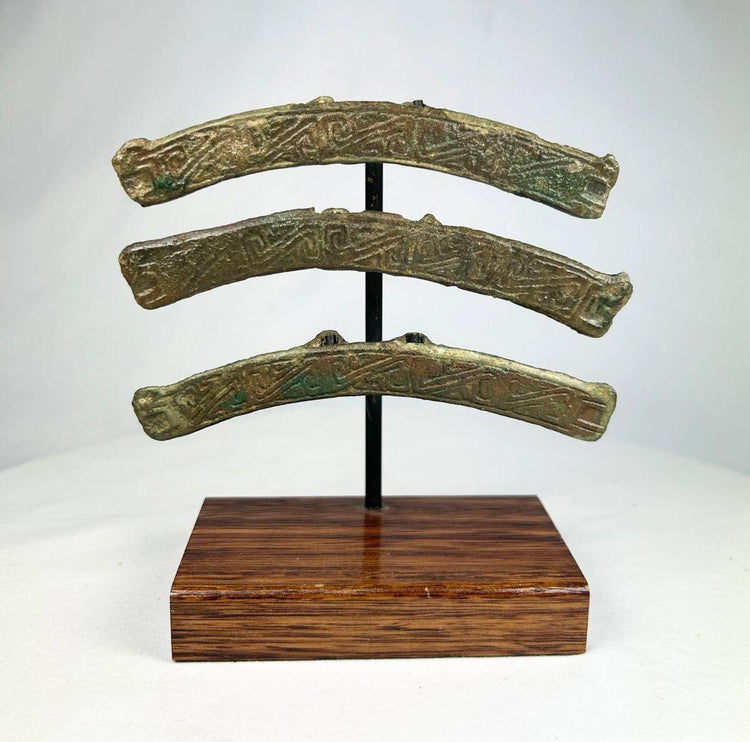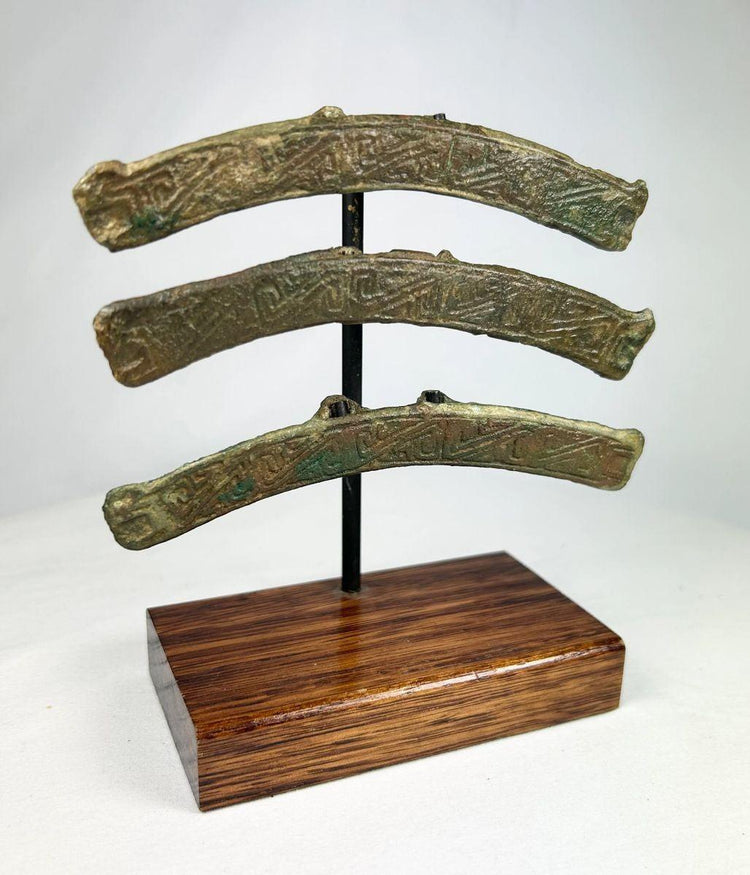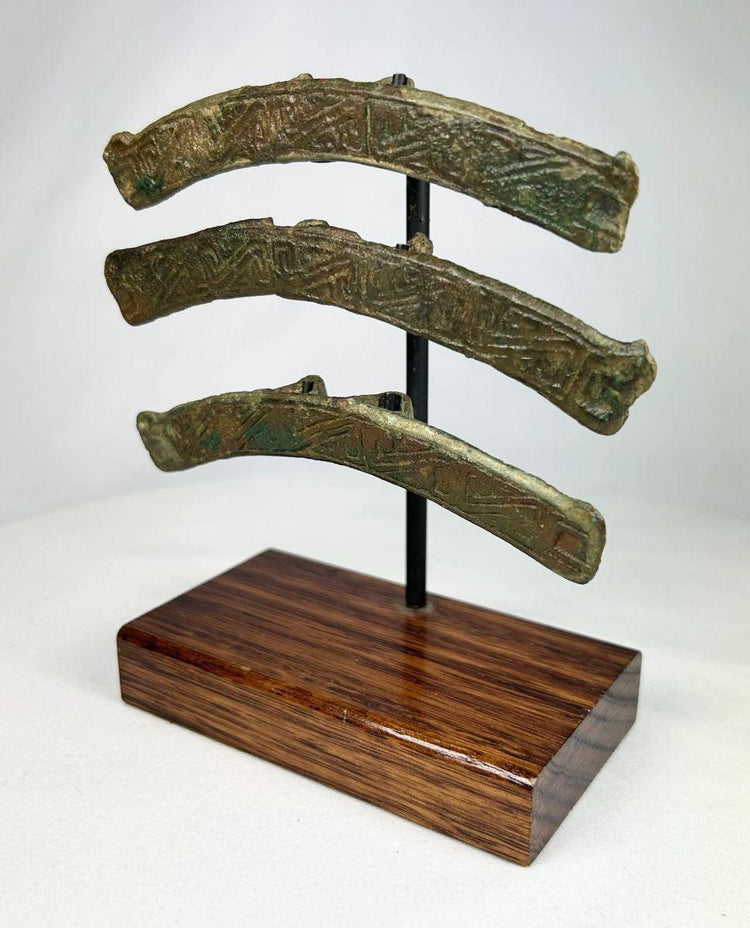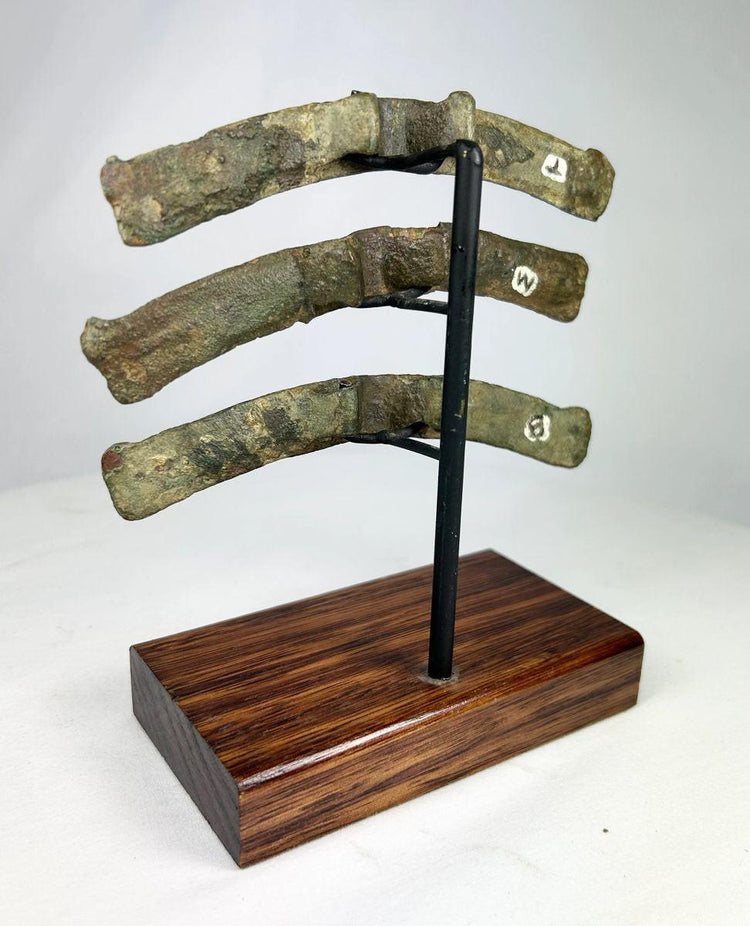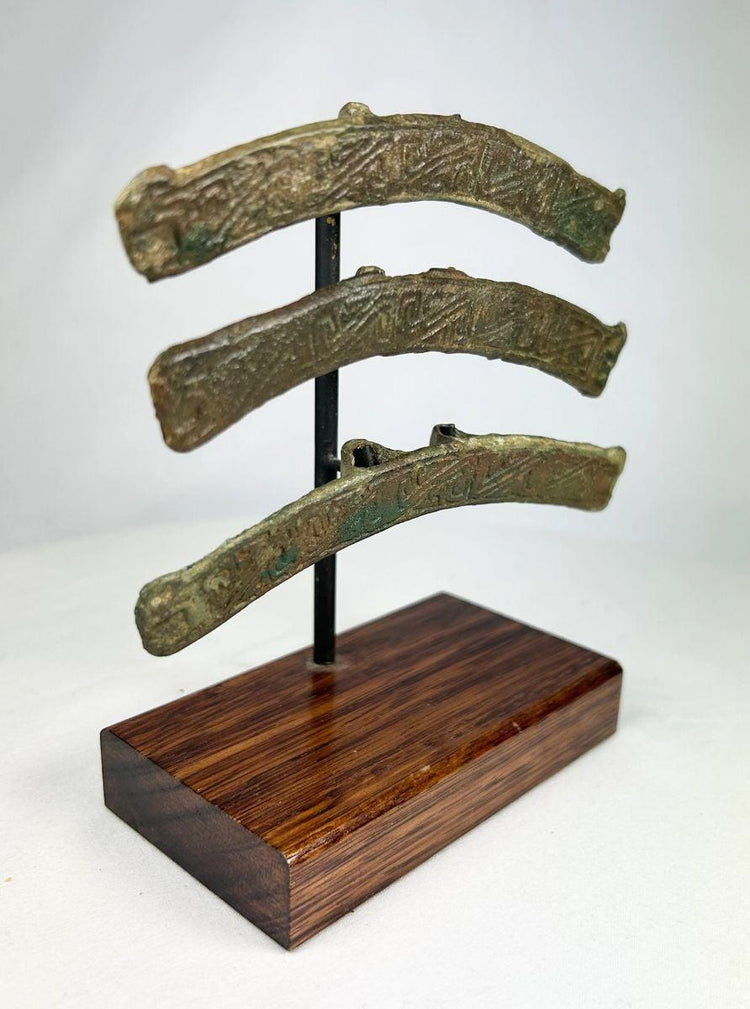Ancient Chinese Bronze Chariot Fittings | Warring States to Han Dynasty | 475 BCE – 220 CE
Description
More
Less
Historical Context & Origin
Region: Ancient China
Material: Solid cast bronze with inscriptions and engraved motifs
Period: Warring States to Han Dynasty (475 BCE – 220 CE)
Description
These finely cast bronze fittings are believed to have been part of a chariot’s harness or structural mount, possibly serving as rein guides for horses or as decorative supports for wooden beams. Chariots were central to elite status and warfare in ancient China, symbolizing both military might and aristocratic prestige. Such fittings were often interred in tombs of high-ranking officials or military commanders, ensuring that their authority and grandeur accompanied them into the afterlife.
Each fitting is curved to contour around leather or wooden components, with two rear hooks for attachment. The surfaces are decorated with inscriptions and stylized patterns that may represent workshop marks, noble lineage, or auspicious protective symbols. Professionally mounted on a custom wooden stand, these fittings are presented as significant relics of early Chinese martial and ceremonial traditions.
Features
- Curved bronze fittings with rear hooks for attachment
- Engraved inscriptions and stylized symbolic motifs
- Rich green and brown patina from centuries of burial
- Possible workshop or ownership marks on the surface
- Mounted on custom wooden display stands for presentation
Cultural Significance
Bronze chariot fittings such as these embodied power, status, and ritual meaning in early Chinese society. Reserved for royalty, nobility, and military commanders, they highlighted the prestige of chariot warfare and processional display. Their burial alongside aristocracy suggests a dual role—both practical in life and symbolic in death—ensuring protection, safe passage, and continued authority in the afterlife. The inscriptions and motifs may have also invoked spiritual blessings for victory, travel, and divine protection.
Condition
The fittings survive in excellent archaeological condition, with a stable structure and attractive patina. The bronze shows natural green and brown oxidation, confirming its age, while minor surface wear is consistent with long-term burial. Archaeological labels remain on the reverse, attesting to prior academic or museum documentation and further enhancing provenance.
Dimensions (approximate)
Height: 5.5 in
Width: 5 in
Age
Over 2,000 years old
Description
Historical Context & Origin
Region: Ancient China
Material: Solid cast bronze with inscriptions and engraved motifs
Period: Warring States to Han Dynasty (475 BCE – 220 CE)
Description
These finely cast bronze fittings are believed to have been part of a chariot’s harness or structural mount, possibly serving as rein guides for horses or as decorative supports for wooden beams. Chariots were central to elite status and warfare in ancient China, symbolizing both military might and aristocratic prestige. Such fittings were often interred in tombs of high-ranking officials or military commanders, ensuring that their authority and grandeur accompanied them into the afterlife.
Each fitting is curved to contour around leather or wooden components, with two rear hooks for attachment. The surfaces are decorated with inscriptions and stylized patterns that may represent workshop marks, noble lineage, or auspicious protective symbols. Professionally mounted on a custom wooden stand, these fittings are presented as significant relics of early Chinese martial and ceremonial traditions.
Features
- Curved bronze fittings with rear hooks for attachment
- Engraved inscriptions and stylized symbolic motifs
- Rich green and brown patina from centuries of burial
- Possible workshop or ownership marks on the surface
- Mounted on custom wooden display stands for presentation
Cultural Significance
Bronze chariot fittings such as these embodied power, status, and ritual meaning in early Chinese society. Reserved for royalty, nobility, and military commanders, they highlighted the prestige of chariot warfare and processional display. Their burial alongside aristocracy suggests a dual role—both practical in life and symbolic in death—ensuring protection, safe passage, and continued authority in the afterlife. The inscriptions and motifs may have also invoked spiritual blessings for victory, travel, and divine protection.
Condition
The fittings survive in excellent archaeological condition, with a stable structure and attractive patina. The bronze shows natural green and brown oxidation, confirming its age, while minor surface wear is consistent with long-term burial. Archaeological labels remain on the reverse, attesting to prior academic or museum documentation and further enhancing provenance.
Dimensions (approximate)
Height: 5.5 in
Width: 5 in
Age
Over 2,000 years old
You May Also Like






















